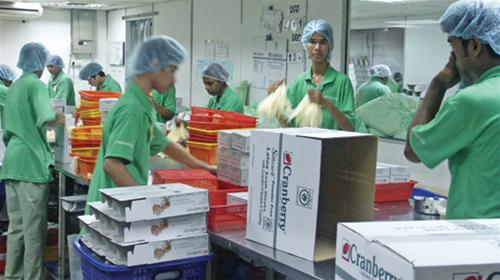 Bridge
Bridge
The ubiquitous dollar, Part I: Where do export labourers get dollars?
National Assembly to supervise manpower export
The ILO economist confirmed that
ASEAN economies are resuming very strongly, especially in
The ubiquitous dollar, Part I: Where do export labourers get dollars?
National Assembly to supervise manpower export 
The country now expects to realise its target of exporting 85,000 workers this year. To maintain the labour export market, MoLISA has continued with supportive programmes for workers who will go overseas, including courses that hone workers’ skills and training on customs, familiar practices and the laws in host countries. The MoLISA also now offers more training courses on welding, construction, mechanic engineering, tourism and hotel services as the importing markets all have a high demand for these occupations.
The ILO economist confirmed that
ASEAN economies are resuming very strongly, especially in
Another interesting point is that
Notably, the recent world economic crisis didn’t hit the poor the most, but rather those who have just escaped from poverty thanks to fast economic growth rate and who work at industrial and export processing zones. The recent crisis suddenly made many people become jobless and they felt into poverty again.
Labour productivity is another surprise in
Should Southeast Asian governments pay attention to creating jobs at home or promoting labour export?
I think both. They should better manage and avoid dependence on labour exportation while creating more jobs and improving education systems. They can’t choose one of the two; they must do both. It is important to seek balance.
Do you think that this crisis made Southeast Asian governments change their approach to labour issues?
After the crisis, many Southeast Asian leaders suddenly realized that they have to look to the long-run.
The Malaysian Prime Minister asserted that, to move from an average income to high income country, you can’t maintain big income gaps. That’s a new and interesting view. The Singaporean Finance Minister last year said that, in crisis, the top priority is maintaining jobs and job quality after the crisis. They opened new education centres, improved productivity and spent a lot of money on those two tasks.
The Vietnamese Prime Minister also noted that human resources and infrastructure are
In short, I’m impressed by a quickly recovering
What do you think about labour cooperation in the region?
That’s the trend of migration. Migrant workers are a fact and will rise in the region. Some ASEAN countries like
 However,
However,
But how can migrant labour be better managed?
We must send skilled and well-educated workers overseas. Such people will be able to learn more and send more money back home. Another thing is recognizing the skills and ability of workers among ASEAN countries. Overseas workers must be treated similarly to native workers.
Do you think that labour export is the sound way in the long run?
I think it plays a certain role in a country’s development because it brings about overseas remittances to the country and income for worker families, plus it helps reduce job pressure. However, dependence on migrant workers also causes risks.
It is easy for governments to export labor, but there are some dangers: reducing the pressure on governments and businesses to improve the national economy, productivity, creativeness and renovation. In addition, they will lose talented people because they must export well-trained workers.
For labour importing countries, they will depend on low-cost foreign workers and will not have the motivation to raise labour productivity to invest in new products or to discover new markets. Large-scale dependence doesn’t benefit national development.

 Previous page
Previous page Back to top
Back to top







